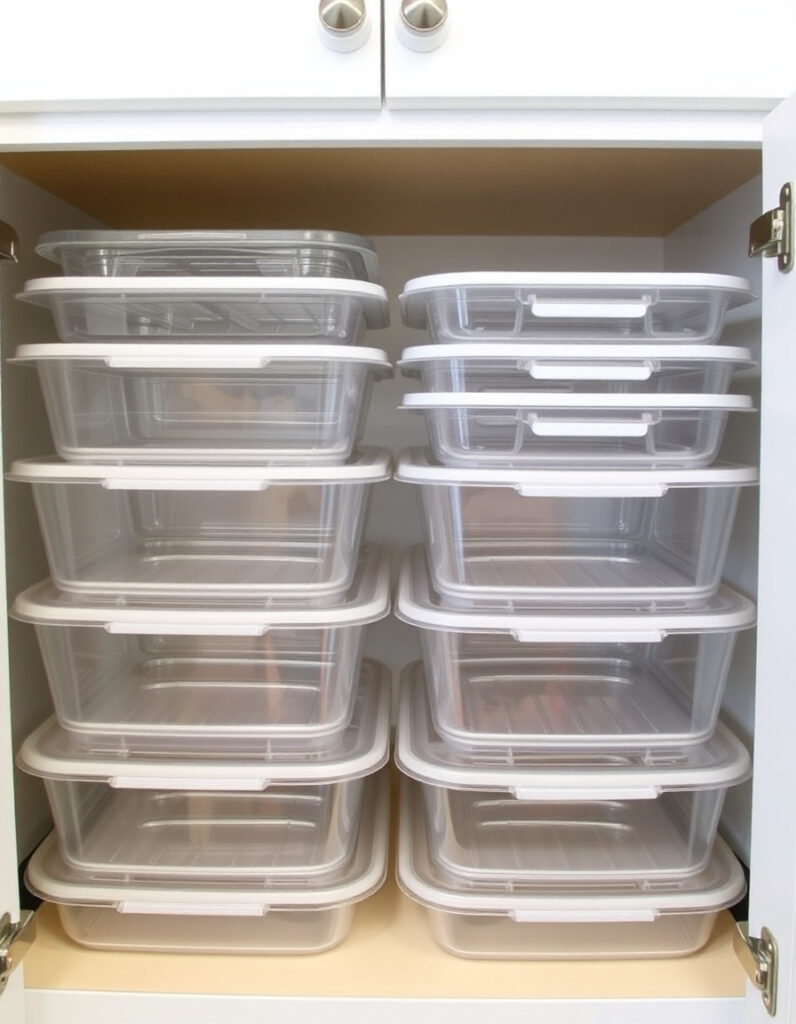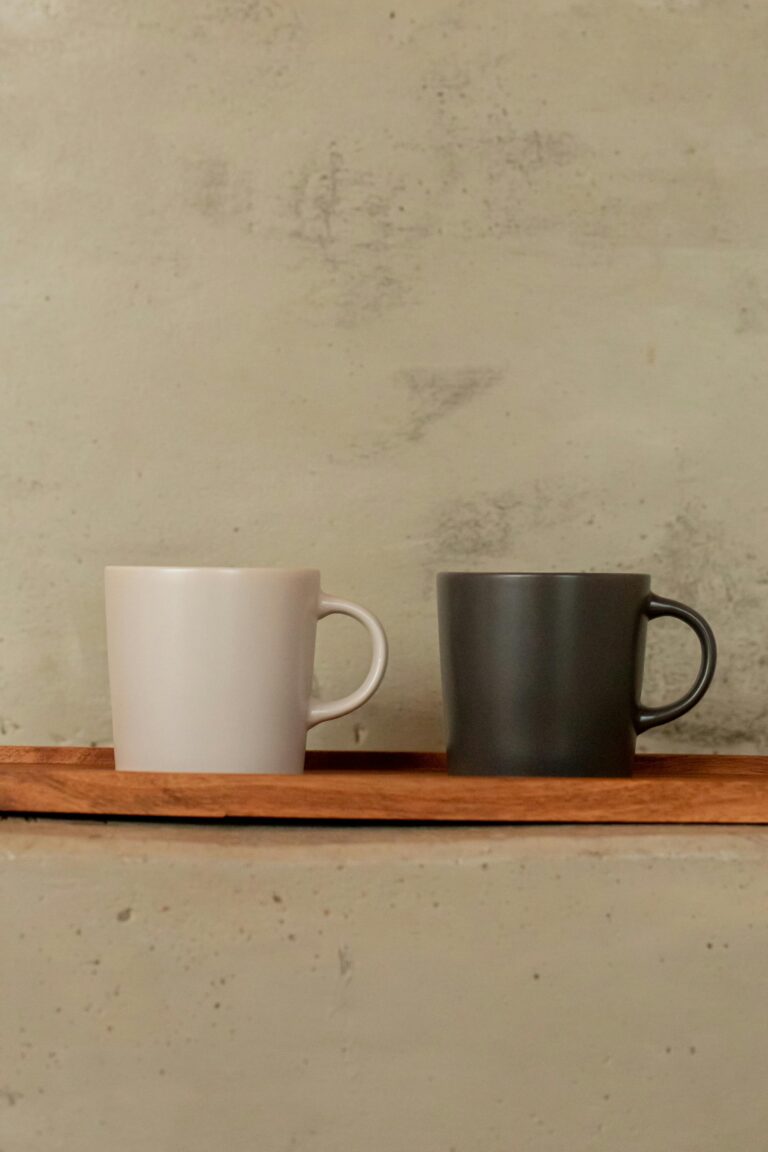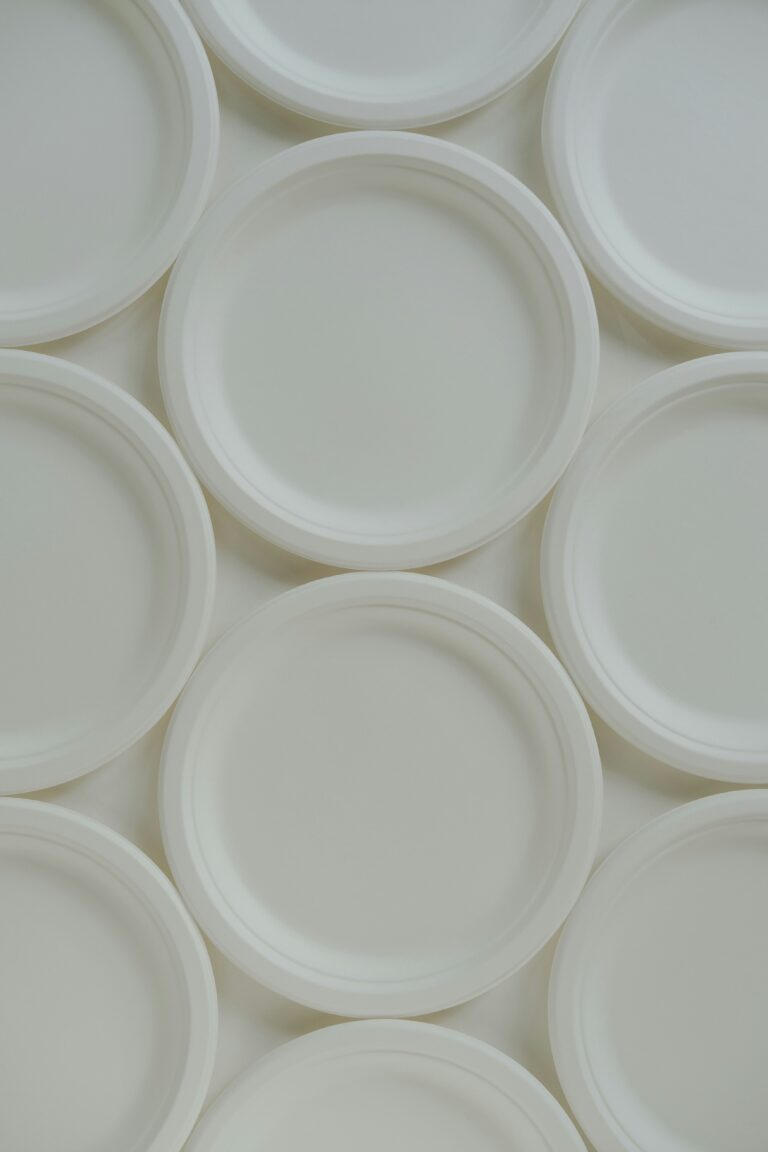Meal prep can simplify your week, but storage headaches tend to get in the way. Containers that won’t stack, lids that go missing, and cabinets that overflow turn meal prep container storage problems into daily frustration. Here’s how to tackle the most common issues with food storage containers.
Why Food Storage Containers Can Be Tricky to Organize

Most container sets don’t account for real-world kitchen storage. Shapes that seem practical in the store might not fit your shelves. Different brands rarely work together, and lids get separated from bases within days.
The good news? Small adjustments can make your meal prep organization much more manageable.
You don’t need to buy all new containers or renovate your cabinets. Strategic changes to what you keep and how you arrange it can help create a system that actually works.
1. Match Container Shapes to Your Storage Space for Better Meal Prep Organization
Round containers might waste space if your shelves are square. Square or rectangular food storage containers often fit cabinets and fridges more efficiently. Corners don’t leave gaps when containers sit side by side.
Measure your cabinet depth before buying new sets. This helps you choose containers that actually fit your space. Knowing your dimensions prevents costly mistakes and returns.
Consider drawer storage if cabinet stacking doesn’t work. Flat storage can be easier to access than tall, unstable stacks. Drawers also keep containers at eye level when you open them.
Read More: 6 Ways to Fix a Cutting Board That Keeps Slipping around
2. Use Drawer Dividers to Keep Container Lids from Scattering
Loose lids create chaos fast. A divided drawer or bin can keep them upright and visible. You’ll spend less time digging through piles.
File lids vertically instead of stacking them flat. You’ll spot the right size immediately. This method works for any drawer depth.
Label divider sections by container size if you use multiple sets. This small step can save minutes every time you pack lunch. Color-coded labels work even better if you’re visual.
3. Stack Only Matching Sets to Avoid Meal Prep Container Storage Problems
Mixing brands usually means wobbly towers. Containers from the same line nest properly and use less space. Lids fit multiple bases, which adds flexibility.
Donate or recycle mismatched pieces that don’t fit your main system. Fewer containers can mean better meal prep organization. Quality beats quantity when it comes to kitchen storage tips.
Choose one reliable brand and stick with it. Consistency makes stacking predictable and stable. Look for brands that offer individual replacement pieces if something breaks.
4. Store Containers with Lids Attached When Space Allows
Keeping lids on bases prevents separation. This works best if you have enough cabinet room. You’ll never hunt for matching lids again.
You’ll use more vertical space, but the trade-off can reduce morning stress. Grab-and-go storage is ideal for busy weekdays. No more frantic searches before work.
Reserve this method for containers you use daily. Less-used pieces can stay nested to save room. Prioritize convenience for your most frequent lunch prep containers.
Also Read: How To Organize Kitchen Cabinets By Frequency Of Use
5. Replace Warped or Damaged Airtight Containers Quickly
Warped containers don’t seal or stack well. They let air in and make piles unstable. Food spoils faster when seals fail.
Check seals every few months and toss anything that’s cracked or bent. Old containers might cause more food storage problems than they solve. Damaged pieces undermine your entire system.
Quality airtight containers tend to last longer and maintain their shape. It can be worth investing in durable options. Glass containers resist warping but weigh more and cost more upfront.
6. Use Shelf Risers to Create Layers for Stackable Containers
A riser doubles your usable cabinet height. Place shorter containers on the lower level and taller ones above. This setup maximizes vertical space.
This approach works well for lunch prep containers of varying sizes. Everything stays visible and accessible. No more pulling out five containers to reach the one in back.
Choose adjustable risers if your cabinet dimensions are unusual. Flexibility helps you adapt as your container collection changes. Expandable models fit shelves from eight to sixteen inches wide.
7. Dedicate One Cabinet or Drawer to All Food Container Solutions
Spreading containers across multiple spots makes them hard to track. A single location keeps your system simple. You’ll know exactly where to look every time.
Group containers by size or use within that space. Meal prep containers in one zone, leftover storage in another. Separate sections prevent mixing up pieces.
This approach also shows you when you’re accumulating too many items. You’ll notice duplicates or rarely-used pieces faster. A designated space naturally limits how many containers you keep.
Read More: 7 Simple Kitchen Habits to Stop Daily Clutter Buildup
Quick Tips for Maintaining Your Container Storage System
Review your collection every few months. Toss anything stained, cracked, or missing a lid. Regular purges keep clutter from building up.
Wash and dry containers completely before storing them. Moisture can cause odors or mildew in closed cabinets. Air-dry lids separately to prevent trapped water.
Buy replacements only when you truly need them. Resist the urge to collect every new kitchen storage solution you see. Impulse purchases often sit unused.
Return containers to their designated spot after each use. Consistency is what makes any organization system work long-term.
FAQ
Why don’t my meal prep containers seal properly?
Seals fail when gaskets get dirty or containers warp from heat. Hand-wash lids with warm soapy water to remove food residue. Grease and dried food prevent proper closure.
Avoid microwaving containers not rated for high heat. Warping from heat exposure is a common cause of meal prep container storage problems. Check manufacturer guidelines before heating.
How can I organize containers that don’t stack well?
Use drawer dividers or bins to keep them separated. This prevents tipping and makes each container easier to grab. Vertical organization works better than stacking for odd shapes.
Consider replacing non-stackable containers with square or rectangular food storage containers. They tend to nest more reliably. Uniform shapes create stable towers.
What should I do with mismatched container lids?
Sort lids by size and store them vertically in a divided drawer. If a lid has no matching base, recycle it. Keeping orphaned lids wastes valuable storage space.
Switching to a single container brand can eliminate this issue. Uniform sets mean every lid fits multiple bases. Interchangeable parts reduce the total number of pieces you need.
How do I prevent food storage containers from staining?
Rinse tomato-based foods immediately after use. Stains set quickly on plastic. The longer sauce sits, the harder it is to remove.
Spray containers with cooking oil before adding saucy meals. A light coating can create a barrier. This trick works especially well with red sauces and curries.
Can I mix different container brands in my meal prep organization system?
You can, but stacking becomes less stable. Different brands have varying base widths and lid styles. Mixing often creates gaps or wobbly piles.
Mixing brands works best when you store containers with lids attached. Nesting different shapes together tends to create unstable towers. Keep mixed brands in separate zones if possible.
What’s the best way to store airtight containers long-term?
Nest bases together and file lids vertically nearby. Make sure everything is completely dry. Moisture trapped in sealed containers can develop odors.
Keep containers away from heat sources that might warp plastic. Cool, dry cabinets can help them maintain their shape longer. Avoid storing them near stoves or dishwashers.
How many lunch prep containers do I actually need?
Count how many meals you prep at once. Add two or three extras for flexibility. This accounts for containers in the dishwasher or fridge.
More containers mean more clutter if you’re not using them regularly. Start with fewer and add as needed. You can always expand your collection later.
Why do my stackable containers keep falling over?
Uneven cabinet shelves or mixing container brands can cause instability. Check that your shelf is level. Even slight angles create sliding problems.
Warped containers also stack poorly. Replace any pieces that no longer sit flat or seal properly. One damaged container can destabilize an entire stack.
Final Thoughts
Small changes to how you handle meal prep container storage problems can clear up cabinet chaos. Focus on consistency, whether that means choosing one container brand or dedicating a single storage spot. Simple systems tend to work better than complex ones.
Test different methods and keep what works for your space. The right system can make meal prep feel simpler and more sustainable. Give yourself a few weeks to adjust before making major changes.



